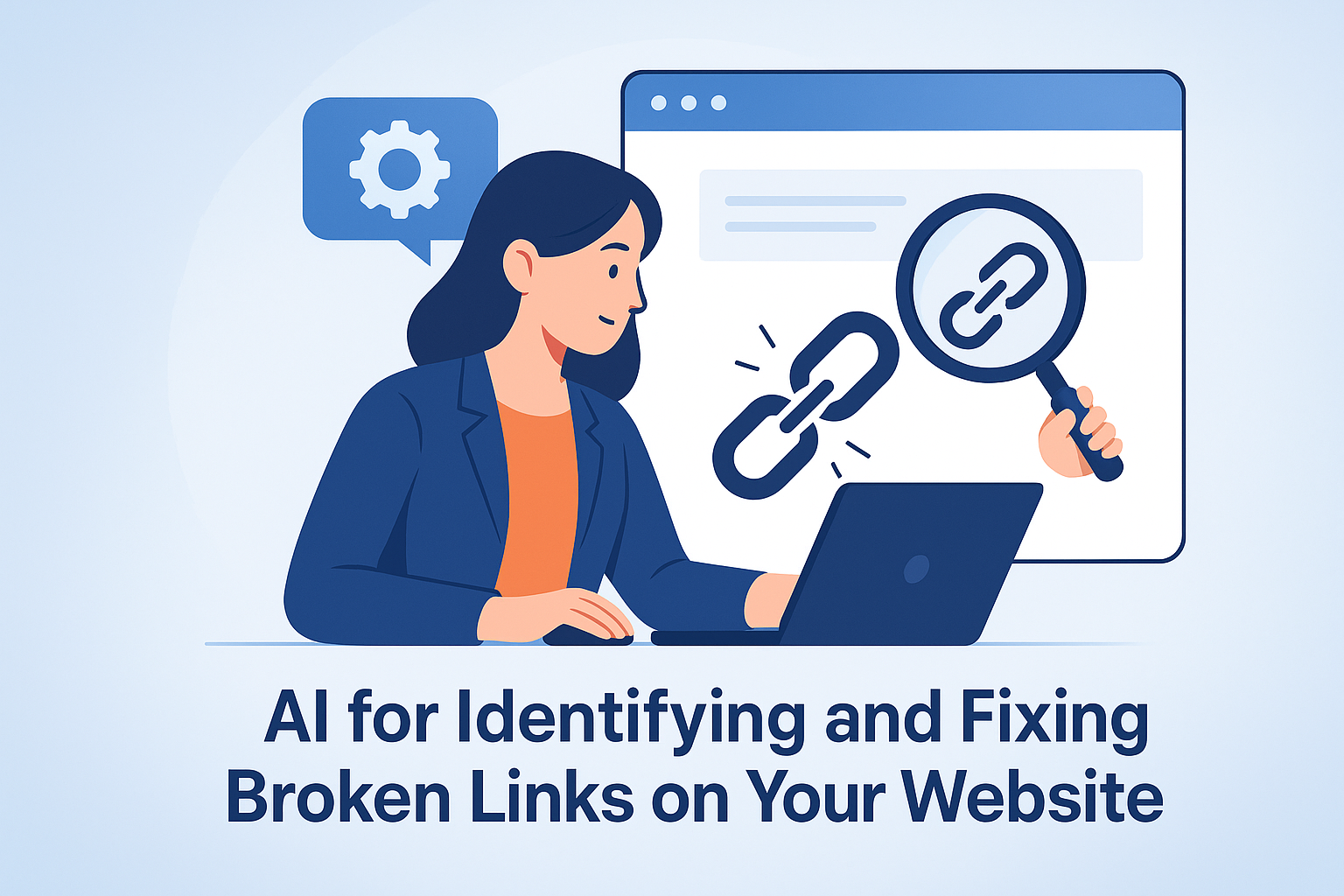Thin content is one of the most common reasons websites struggle to rank. It refers to pages that offer little or no value to users—lacking substance, originality, or depth. And Google has made it clear: thin content won’t cut it.
Fortunately, you don’t need to manually audit hundreds of pages or rewrite content line by line. With AI-powered SEO tools, you can:
- Automatically detect thin or low-performing pages
- Rewrite and expand content with relevance and depth
- Improve UX, crawlability, and keyword coverage
- Re-index and re-promote optimized pages to recover rankings
In this guide, we’ll walk you through how to use DIYSEO GPT, the SEO AI Writer, and Link Marketplace to fix thin content across your site—at scale.
What Is Thin Content?
Thin content refers to pages that:
- Contain very little valuable information
- Are duplicated from other pages (even internally)
- Exist only to target a keyword without offering substance
- Fail to fully address user intent or search queries
- Have low word count and poor formatting (though thin content ≠ short content)
Examples:
| Type | Thin If… |
|---|---|
| Blog posts | Under 300 words, no original insight |
| Product pages | No unique description or value |
| Location pages | Duplicate content across cities |
| Category pages | No intro, description, or links |
| Tag pages | Exist only for indexing, no purpose |
Thin content can hurt your rankings, indexation, and site trust—especially on large, templated websites or aging blogs.
Step-by-Step: Detecting and Fixing Thin Content with AI
✅ Step 1: Run a Thin Content Audit with DIYSEO GPT
Begin with the DIYSEO GPT and launch these expert-crafted prompts:
🔍 Crawled – Not Indexed
Pages that Googlebot sees but doesn’t index are often thin or low-quality.
Ask in Chat History:
“Which of these pages are likely excluded due to thin content?”
DIYSEO GPT will evaluate your GSC data and flag:
- Pages with low word count
- Duplicate or near-duplicate content
- Pages with low click-through rates and engagement
📉 Query Position Changes
Pages that once ranked but have fallen off may have outdated or thin sections.
Ask:
“Which dropped pages need a content depth update?”
✅ Step 2: Review Structural Issues Using Layout & Readability Review
Use this prompt to identify thin content patterns such as:
- Walls of text with little formatting
- No internal links or calls-to-action
- Lack of visual structure (no lists, tables, headings)
- Sections with generic or placeholder copy
This helps you spot pages that may look “long enough,” but don’t offer real user value.
✅ Step 3: Rewrite Thin Pages with SEO AI Writer
Once you’ve identified thin pages, open the SEO AI Writer to expand and enhance them.
Prompt Example:
“Rewrite and expand this 300-word article into a 1,200-word SEO-optimized blog post. Add actionable tips, subheadings, and real-world examples.”
The AI will output content that’s:
- Aligned with search intent
- Formatted for readability
- Enriched with expert-level language and E-E-A-T signals
- Structured for SEO (H2s, bullet points, CTA sections, internal links)
Other Prompts:
- “Add a FAQ section to increase word count and provide clarity.”
- “Insert a step-by-step guide to improve depth and engagement.”
- “Reframe this content to better answer the search query: ‘How does AI detect SEO issues?’”
✅ Step 4: Add Internal Links to Reinforce Topic Authority
Use the Page-to-Page Link Suggestions prompt in DIYSEO GPT to find:
- Pages that should link to the newly updated article
- Related high-performing content to pass authority
Then use SEO AI Writer to place those links naturally.
Prompt:
“Insert a contextual internal link to our AI SEO Tools page using the anchor ‘automated SEO audits.’ Place it in the first 200 words.”
This helps Google better understand the context and importance of the refreshed page—and keeps users exploring.
✅ Step 5: Ensure On-Page Signals Are Fully Optimized
Use SEO AI Writer to quickly generate or rewrite:
- Meta titles and descriptions that reflect the new content
- Alt text for images or infographics
- CTA sections to guide user interaction
- Structured data elements (FAQs, How-tos, product schema)
Prompt:
“Write a meta description under 155 characters targeting ‘how to fix thin content for SEO.’ Include urgency and value.”
Promote Refreshed Pages Using Link Marketplace
Once your thin content is rewritten and expanded, use the Link Marketplace to regain traffic and authority.
Strategy:
- Target external sites in your niche (e.g., SEO, marketing, AI, SaaS)
- Filter by Domain Authority, location, or language
- Place links to your newly improved content to speed up re-indexing and trust-building
Example:
You’ve rewritten a 300-word article on “AI Content Strategy” into a 1,500-word resource guide. Next:
- Go to Link Marketplace
- Filter for sites in SEO/marketing niche
- Select placements with DA 40+
- Build 2–3 backlinks to your refreshed article
This promotes your updated content as fresh and authoritative, not just fixed.
Thin Content Detection & Optimization Workflow
| Step | Tool | Task |
|---|---|---|
| Detect low-quality content | DIYSEO GPT – Crawled Not Indexed | Find unindexed or ignored pages |
| Diagnose structural issues | Layout & Readability Review | Spot shallow or weak formatting |
| Rewrite and expand | SEO AI Writer | Enrich content with depth, clarity, and SEO value |
| Reinforce with internal links | Page-to-Page Suggestions | Improve crawlability and user flow |
| Promote externally | Link Marketplace | Boost trust and rankings with backlinks |
Real-World Example: From Thin to Top-Performing
Problem: A 2019 blog post titled “What Is Technical SEO?” was only 320 words and hadn’t been indexed for over 12 months.
DIYSEO Fix:
- Ran Crawled – Not Indexed → Flagged the post as likely thin
- Used SEO AI Writer to:
- Expand the article to 1,500 words
- Add H2s, internal links, and real-world examples
- Include a 3-question FAQ section and CTA
- Used Page-to-Page Suggestions → Linked from 3 other SEO-related guides
- Placed 2 backlinks via Link Marketplace on mid-tier SEO blogs
Results:
- Page re-indexed within 48 hours
- Ranking in top 10 for “technical SEO explained” within 3 weeks
- 4+ minute average session time
- Generated 19 leads via the new CTA in the first month
Final Thoughts
Thin content is a silent SEO killer—but it’s also one of the easiest problems to solve with AI.
With DIYSEO, you can:
- Automatically find thin pages using GPT-powered audits
- Expand and optimize content with the SEO AI Writer
- Promote and rebuild trust through the Link Marketplace
Great rankings don’t always require more content. Sometimes, they just need better content—and AI makes that fast, scalable, and effective.
Frequently Asked Questions
1. What is thin content, and why is it problematic for my website?
Thin content refers to web pages that provide minimal value to the user. These pages often include content that is too short, irrelevant to user queries, or a duplicate of content found elsewhere on the web. Thin content is problematic because it fails to engage your audience, meaning users are likely to leave your site quickly, increasing your bounce rate. Additionally, search engines like Google aim to deliver only the most relevant and high-quality search results. Thus, websites with a significant amount of thin content can face penalties, leading to a decrease in your website’s visibility and ranking in search engine results. Addressing thin content is essential to maintain user engagement and improve search engine optimization (SEO).
2. How can Artificial Intelligence (AI) help in detecting thin content on my website?
AI simplifies the complex task of identifying thin content by automatically analyzing vast amounts of data across your website. AI uses algorithms to assess the quality of each page, considering factors such as word count, relevance, originality, and engagement metrics like bounce rates and user interactions. Advanced AI systems can also understand keyword optimization and the context of your content, allowing them to flag content that does not meet your site’s quality standards. By automating this process, AI not only speeds up the identification of thin content but also offers a more precise and comprehensive analysis than manual methods.
3. In what ways can AI not only detect but also fix thin content on my website?
Once AI detects thin content, it can offer several solutions to improve the quality of these pages. AI tools can suggest additional content topics, keywords, or related articles to enhance these pages. They can also recommend structural changes, such as adding multimedia elements like images or videos to make your content more engaging. Additionally, AI can automate the process of content optimization by suggesting new headings, rewriting sentences for clarity and better SEO, or merging thin pages with similar topics to create comprehensive resource pages. These capabilities help ensure your content not only meets quality benchmarks but is also aligned with user intent and search engine guidelines.
4. Are there any risks associated with using AI to manage website content?
While AI can significantly streamline content management processes, it is not without potential risks. Over-reliance on AI for decision-making can sometimes lead to a lack of human oversight and creative nuance, which are often crucial for quality content. AI tools work best with large data sets, which means they may not be as effective for smaller websites with limited content. There’s also the consideration of data privacy and ensuring that AI systems comply with data protection regulations. Despite these risks, when used wisely and in tandem with human expertise, AI can greatly enhance content management while minimizing errors and inefficiencies.
5. How does improving thin content affect overall website performance?
Enhancing thin content brings about multiple benefits that can substantially improve the overall performance of your website. Firstly, by increasing the quality of your content, you’re likely to see improved engagement metrics, such as lower bounce rates and longer session durations, as users find more value in the content you’re providing. This enhanced user experience can translate into higher conversion rates and increased customer loyalty. From an SEO perspective, search engines reward quality content, so fixing thin content can lead to better indexing and higher search result rankings, leading to increased organic traffic. Lastly, consistently strong content can establish your website as an authority in its field, enhancing your reputation and potentially attracting partnerships or advertising opportunities.



